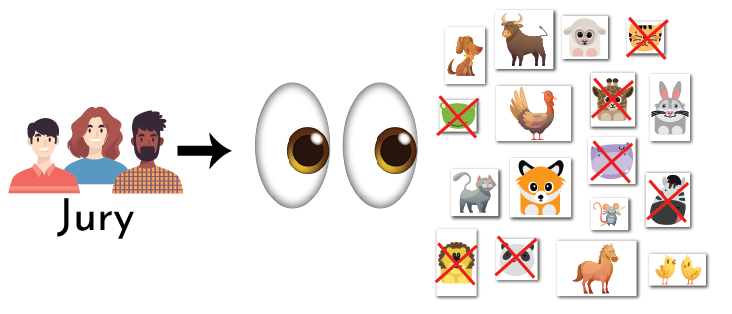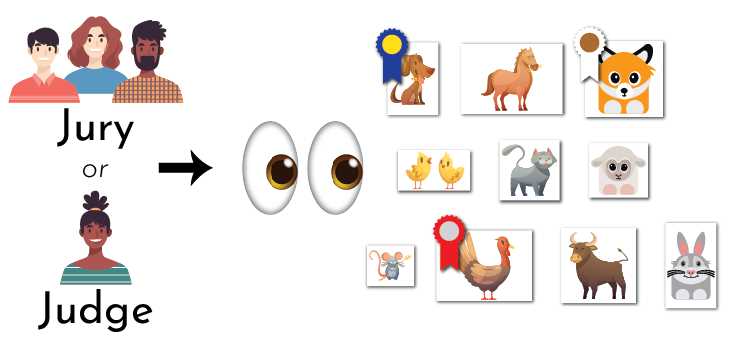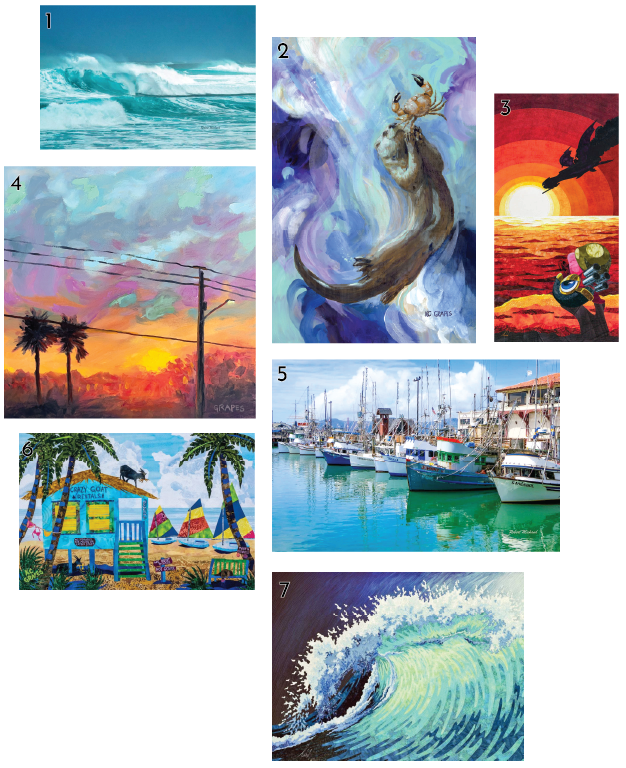Judging is Subjective
- Published:
- Length: 1463 words
- Reading Time: 8 minutes
Rejection letters are an inevitability all artists will face when trying to exhibit their work. As artists, the work we create is almost like an extension of our souls. Getting rejected from an exhibition can feel like the jury/organizers are rejecting us, not just the art. But that's not the case.
It's important for we artists to separate our personal selves from our art, if only to protect our fragile egos when it comes to facing rejection again and again. And for me, the things that helped the most were learning more about the jurying process and finding the niches in the world where my art fit the best. Learning about the jurying process helped me understand what was going on "behind the scenes", and finding the places that my work fit meant I reduced the number of rejections I received.
What is a "juried" show?
Some exhibitions are "juried" exhibitions. The "jury" is one or more individuals that act like a screening process for the exhibition in question; they weed-out quite a bit of the submitted work, keeping only art that fits the technical parameters and jury's vision of the show. Here's how the process works:
Step 1: A Call for Entry is published and artists submit their work for consideration.

Step 2: A jury reviews the submitted artwork and removes any art that doesn't fit.

Step 3 (optional): If the show is judged, the accepted work is assessed to determine which are prize-worthy. It's worth noting that in the fine art world, the jury is usually different from the judge(s) for any given exhibition. The jury chooses the collection of art in the show; the judge reviews those selected works and determines which deserve prize recognition. This is not the case in the quilt world. In all judged quilt shows of which I'm aware, the jury members are also the judges.

Step 4: The juried exhibition is displayed to the public.

Why jury at all?
Juried shows tend to be more prestigious. Because the process of jurying eliminates artwork, it's harder to have your work accepted and thus exhibited with a given show. Additionally, the process of elimination typically results in a pool of art that's generally of higher quality and "works" together than art displayed non-juried shows. It's noteworthy for artists' work to be accepted, since not every piece is.
When selecting artwork for a new exhibition, juries (usually 1-3 people) are responsible for removing work that doesn't fit. It's easy for us artists to assume that being rejected means that the art is "bad", but that's not always true. In fact, I would venture to guess that most of the work rejected from any given juried exhibition is actually quite good. So what's the deal?
There's a second component to the process of putting together an art show: Juries are responsible for choosing artwork that fits the theme, or vision, of the show and collectively works well together. This is the real reason — and the one that took me the longest to internalize — that being rejected does not mean the art is bad. Being rejected means my art just didn't fit the look of everything else that was selected. Let's look at an example.
Note: All of the artwork used in the example below was made by my mom (KC Grapes), my dad (Bob Michaud), or me. Mom did the paintings, Dad did the photography, and I did the fabric art/quilts.

In this example, I'm working with a much smaller number of total pieces than a true exhibition would have. However, the reasoning behind what should/shouldn't be included is the same.
I've chosen seven artworks with the theme idea of "water". All of these works show water in some fashion. However, there are two that are different enough from the others that they stand out and maybe don't belong in this group.
Artwork #4 Those of us who are familiar with Florida wetlands will recognize the swampy forest in the distance, but it may not be obvious to others. As this painting is the only one that doesn't clearly display the water, a juror may feel it doesn't fit.
Artwork #3 Nintendo fans of the character "Kirby" may recognize this iconic scene from the video game "Kirby Super Star". As this is the only artwork in the group that's fan art, a juror may feel it doesn't belong.
Are either of these artworks "bad"? Definitely not. And yet, at least in this collection, they're both in danger of being rejected.
Jurying (and judging) is subjective
It's right there in the activity name, after all: "judging". By entering in juried and judged exhibitions, we are asking other people to make a value assessment on our art. But people are not automatons. Of course these contests are going to be subjective, rather than objective, because every juror and judge's personal opinion will weigh in.
The old adage of "you can't please all the people all the time" is very true in art as well as life. Not everyone is going to like our art. Unfortunately, when someone who doesn't like our art happens to be in a position of making a determination of whether our art is worthy of being included in a show...well, that could have an impact on whether we receive a rejection letter. Does getting rejected mean we made a "bad" piece of art? No. It might just mean the jury didn't like it.
Enter shows that make sense for your style of art
But you know what? There are hundreds of other shows, and thousands of other people serving as jurors and judges; maybe this particular show wasn't a good match-up for our art, but I can guarantee another one out there will be.
Most exhibitions publicize their jurors and/or judges along with the Call for Entry. This gives us artists a chance to look and see what kind of art is associated with those individuals (either what they themselves create or what work they've selected in previous exhibitions) and make a judgement call on whether we feel our art is a good fit for that person.
In addition, we have the option of looking back through past exhibitions to see what sort of art has been chosen previously. (This may not be an option for, say, a SAQA exhibition, which are not recurring events. But other shows, such as Quilt National, have a long history.) If a show has a history of displaying mostly abstract art, it might not be a good fit for my own work, since I work primarily in the style of imaginative realism.
We artists can increase our chances of being accepted to a show simply by choosing to enter shows that seem more receptive to our styles of art.
Of these two options, I don't typically concern myself with trying to over-analyze a specific judge or juror. I figure that if I don't enter because I don't think a judge will like my work, I'm guaranteed to not be accepted.
By the same reasoning, I don't NOT enter a show just because it seems to be biased against my style of work. If I don't enter, I don't have a chance of being accepted. But I also no longer get upset when my work isn't accepted. I just chalk it up to "not being a good fit". On the other hand, there have been shows that have accepted my work, and when I've gone to see those shows in person, I've had the impression, "Man, I wouldn't have chosen my own art for this! There's nothing else here that looks like it. What were the jurors thinking?" So it can go both ways!
Artwork Credits I used some artwork created by other people in this blog post. Attribution listed below:
